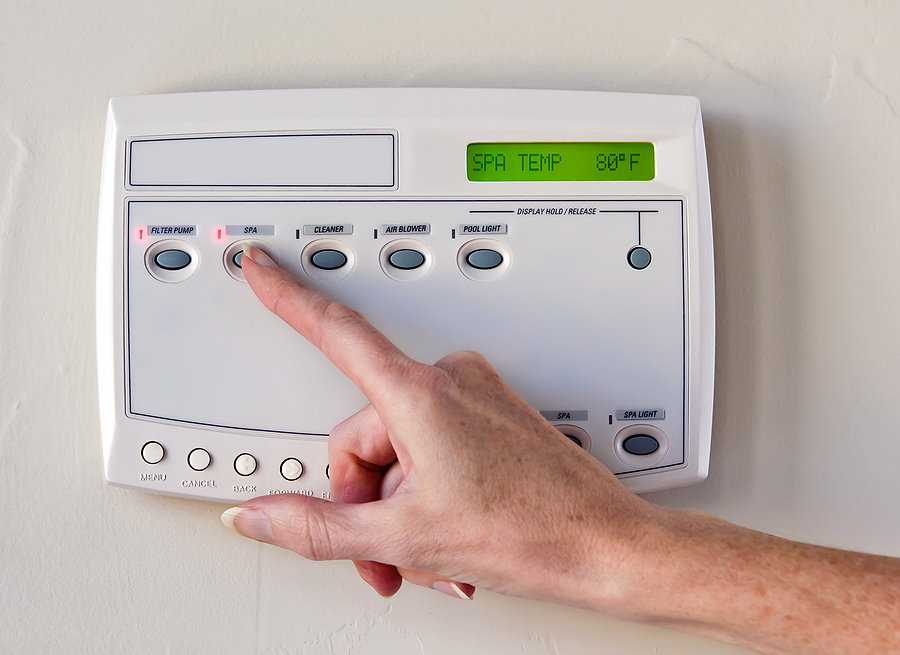Managing a pool can be much easier with the right setup. Modern pool control systems allow you to automate lights, pumps, heaters, and other equipment, giving you more control and convenience. Whether you are a homeowner or a pool service professional, understanding how to integrate your pool equipment effectively is essential.
In this guide, we’ll explain the benefits, steps, and best practices for integrating lights, pumps, and heaters into pool control systems, making your pool experience safer and more enjoyable.
Why Integrate Pool Equipment?
Integrating lights, pumps, and heaters into your pool control systems provides many advantages. Automated systems allow you to:
- Turn lights on or off remotely.
- Schedule pumps to run at optimal times for energy efficiency.
- Adjust water temperature with minimal effort.
By centralizing control, you can save time, reduce energy costs, and ensure that your pool equipment operates efficiently. A well-set-up pool equipment automation setup can also extend the life of your equipment by avoiding unnecessary wear and tear.
Components of a Pool Control System
A pool control system is essentially the brain of your pool setup. The main components that can be integrated include:
- Pool Lights: Indoor and outdoor lights can be programmed to turn on at specific times or controlled remotely.
- Pumps: Circulation pumps and filtration pumps maintain clean water and can be scheduled to run when electricity rates are lower.
- Heaters: Pool heaters can be set to reach your preferred water temperature automatically, reducing manual intervention.
- Other Equipment: Features like water features, chlorinators, and automated covers can also be connected for centralized management.
Proper integration ensures that all these components work together seamlessly, providing convenience and efficiency.
Steps for Integrating Lights, Pumps, and Heaters
- Assess Your Current Equipment
Before beginning integration, evaluate your existing pool equipment. Determine which devices are compatible with your pool control system. Some older pumps or heaters may require additional adapters or upgrades for automation.
- Choose the Right Pool Control System
Selecting the appropriate pool control system is critical. Look for a system that supports remote access via apps or smart home integration. Systems like pool and spa control systems are designed to manage lights, pumps, and heaters in one platform, making your pool management simple and efficient.
- Plan Your Automation Setup
A detailed plan helps prevent conflicts and ensures that all equipment functions correctly. Decide which devices you want to automate and set schedules for operation. For example:
- Run pumps during off-peak electricity hours.
- Turn on pool lights at sunset.
- Heat the water only when needed to save energy.
A thoughtful pool equipment automation setup improves convenience and efficiency.
- Installation and Wiring
When integrating equipment, proper installation and wiring are essential. Follow manufacturer’s instructions carefully. Ensure all electrical connections are secure and waterproof to prevent hazards. If you are unsure, it’s always best to hire a professional to handle installation.
- Test the System
After installation, test each component of your pool control systems. Check that lights respond to commands, pumps operate on schedule, and heaters maintain desired temperatures. Testing ensures everything is running smoothly and prevents future issues.
Benefits of Pool Equipment Automation Setup
Automating your pool equipment offers multiple benefits:
- Convenience: Control lights, pumps, and heaters remotely from a smartphone or tablet.
- Energy Efficiency: Schedule equipment to run only when needed, lowering utility bills.
- Extended Equipment Life: Reduce unnecessary wear on pumps and heaters.
- Safety: Automated lights improve nighttime visibility, and scheduled pumps prevent stagnant water.
- Customization: Tailor schedules and settings to match your lifestyle.
A well-planned pool equipment automation setup enhances both enjoyment and safety while making pool maintenance less time-consuming.
Professional Assistance
While some pool owners prefer DIY installation, professional help ensures proper setup and long-term reliability. Experts can assess your pool’s current configuration, recommend compatible equipment, and integrate it into a centralized pool control system. This minimizes errors and ensures that your pool functions efficiently year-round.
Tips for Maintaining Your Pool Control System
- Regularly inspect electrical connections to prevent damage.
- Keep your control system software updated if using smart systems.
- Clean pumps and filters according to manufacturer recommendations.
- Monitor energy usage to optimize schedules for cost savings.
Following these tips helps maintain your pool control systems in peak condition while avoiding costly repairs.
Conclusion
Integrating lights, pumps, and heaters into pool control systems is an excellent way to enhance convenience, safety, and efficiency. By carefully planning your pool equipment automation setup, choosing compatible equipment, and testing thoroughly, you can enjoy a well-managed, low-maintenance pool experience. Whether for residential or commercial pools, automated systems provide consistent performance, energy savings, and peace of mind.
For professional assistance with your pool control systems or any automation needs, call us at (602) 688-7465.

